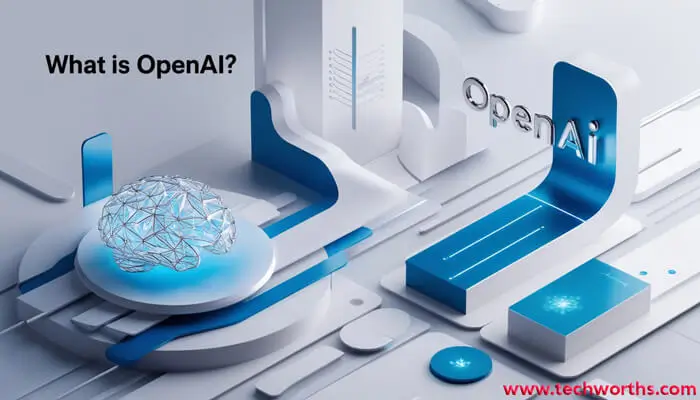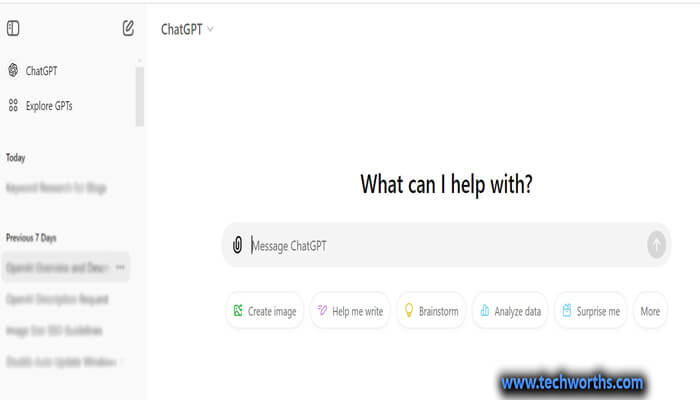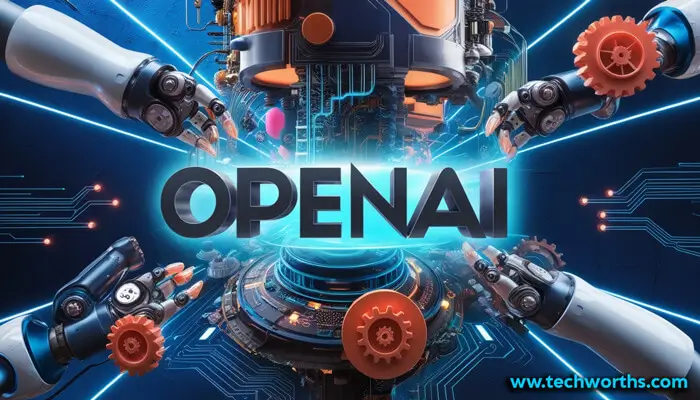Introduction
Artificial intelligence (AI) is everywhere nowadays, and OpenAI is an important element of this revolution. OpenAI is an AI research organization dedicated to making AI safer, more advanced, and accessible. If you’ve heard about ChatGPT, DALL·E, or AI chatbots, then you are already aware of OpenAI’s work. In In this blog, we discuss OpenAI’s history, products, cooperation with Microsoft, and future.
What is OpenAI?

OpenAI is an AI research company co-founded in 2015 by Elon Musk, Sam Altman, and Greg Brockman. Its primary focus is on Artificial General Intelligence (AGI), which seeks to make AI more human-like. AGI means an AI that can perform any intellectual task at the human level.
OpenAI has launched many popular AI tools and models, such as GPT-3, GPT-4, ChatGPT, and DALL·E. These models have determined the future of AI technology and are employed in a wide range of sectors.
Timeline and History of OpenAI
Let’s take a look at some of the major milestones of OpenAI:
- 2015: The foundation of OpenAI was laid with a mission to develop safe AI.
- 2018: OpenAI launched its first breakthrough language model, GPT-1.
- 2019: GPT-2 was released, which was capable of generating complex text.
- 2020: GPT-3 was launched, which was the most advanced language model of its time.
- 2022: OpenAI launched ChatGPT, which is an AI chatbot, and rapidly became popular across the world.
- 2023: OpenAI launches GPT-4 and DALL·E 2, which now have even more powerful text and image generation capabilities.
OpenAI Key Technologies
Some of OpenAI’s key products have transformed AI technology:
GPT (Generative Pre-trained Transformer): OpenAI’s GPT models (GPT-3 and GPT-4) are the best in language understanding and generation. These models help in natural language processing tasks such as writing, summarization, and chatbot development.

ChatGPT: This AI chatbot model is based on GPT-4, which makes text-based conversations human-like. ChatGPT is quite popular in AI chat and customer service domains.
DALL·E and DALL·E 2: DALL·E AI model generates images from text prompts. This tool is used in AI photography generator and AI art generation. DALL·E Mini is its lightweight version.
Codex (GitHub Copilot): Codex is a powerful tool for AI developers that suggests code. This has made the work of developers much easier and efficient.
Stable Diffusion: Another popular AI model that is becoming famous for AI art generation. It is used for image generation, similar to MidJourney and DALL·E.
Benefits and Drawbacks of OpenAI Products and Services
Benefits:
- Advanced AI Solutions: OpenAI’s tools like GPT-4 and DALL·E are very helpful for industries, whether it is content creation or art generation.
- Wide Application: From AI chatbots to AI photography generators, OpenAI’s tools are being used everywhere.
- Developer Friendly: Tools like OpenAI API and GitHub Copilot are very convenient for developers.
Drawbacks:
- High Costs: Using OpenAI’s APIs can be very costly, especially for small businesses.
- Ethical Concerns: Misuse of AI-generated content is also a major concern, such as deepfakes and disinformation.
- Data Privacy Issues: Data privacy and security concerns will arise while using OpenAI tools because all the data is processed on the server.
Read Also: What is Windows Registry Key?
OpenAI and Microsoft
OpenAI has developed a strong partnership with Microsoft that is benefiting both AI enthusiasts and businesses. Microsoft has invested extensively in OpenAI and has incorporated its models into its products.
Microsoft Azure: Microsoft’s Azure Cloud platform supports OpenAI products like GPT-3 and DALL·E, enabling large-scale AI applications.
GitHub Copilot: Using Codex, Microsoft has developed GitHub Copilot, which assists developers in coding.
Microsoft Office: Microsoft has integrated OpenAI models into its popular software tools such as Word and Excel, making document and data processing tasks AI-driven.
OpenAI Ke Competitors: MidJourney aur Stable Diffusion
While OpenAI is the leader in many aspects, some other AI tools have also entered the market that are providing competition, especially in the creative space. MidJourney is a well-known AI that generates high-quality art from text prompts, similar to DALL·E. Stable Diffusion is another platform that creates images, and is becoming popular in the AI art generation.
The Future of OpenAI

OpenAI’s future seems very promising, with fresh inventions and advancements. OpenAI’s long-term goal is to develop Artificial General Intelligence (AGI), which will enable AI to perform human-level intellectual tasks.In the coming time, we can expect the following:
- ChatGPT and GPT models will become more advanced and intuitive.
- More tools will be developed in AI art generation and creative industries.
- OpenAI’s partnership with Microsoft will become even stronger, and AI integration will be seen in new consumer and business products.
- New standards will be set to address ethical and safety concerns of AI, so that technology can be developed responsibly.
Read Also: What is a Shortcut Virus and how to remove it?
Conclusion
OpenAI has transformed the area of artificial intelligence, and its influence can be seen everywhere. OpenAI offers cutting-edge AI technology, such as GPT-4 language models and DALL·E art generators, to the public. OpenAI is playing a significant role in defining the future of technology through its relationship with Microsoft and innovative capabilities.
Who is the owner of OpenAI?
OpenAI started as a non-profit research organization but now it is a hybrid model that combines non-profit research and capped-profit arms to attract investments. Elon Musk is the co-founder of OpenAI but he is no longer actively involved. Today Sam Altman is the CEO of OpenAI who is taking the organization forward.
What is Generative AI?
Generative AI refers to artificial intelligence models that can generate new content such as text, images, and music. OpenAI’s GPT models and DALL·E are its best examples. These models learn from a lot of data and then create new things based on the patterns.
When was ChatGPT released?
OpenAI released ChatGPT in November 2022. It quickly became quite popular as it was a revolutionary AI chatbot that allows users to interact with AI in a conversational format.
Why is OpenAI Special?
OpenAI stands out because it is committed to making AI safe and ethical. Its innovations, such as ChatGPT, DALL·E, and API services, have set new benchmarks in the AI world. It also focuses on AI ethics, so that AI technologies can be beneficial to society.
What is the OpenAI API?
OpenAI’s API (Application Programming Interface) enables developers to integrate cutting-edge AI models into their applications. The API allows you to use OpenAI’s sophisticated capabilities to construct AI chatbots, generate content, and create art. To access the API, developers will require an OpenAI API key.
What does OpenAI do?
OpenAI is focused on creating Artificial General Intelligence (AGI) — AI that can perform any intellectual task that humans can. OpenAI has made significant progress in this area, with the most notable accomplishment being ChatGPT, a conversational AI available to people globally.
What is the IQ of OpenAI?
GPT and other OpenAI models do not have traditional IQs. However, they are capable of solving difficult tasks, particularly in the areas of natural language processing and image production.
Is ChatGPT smarter than Einstein?
While ChatGPT is very capable of analyzing data and producing human-like text, it lacks Einstein’s inventiveness and cognitive abilities.
Is Elon Musk the owner of ChatGPT?
No, Elon Musk is not the owner of ChatGPT or OpenAI. While he is one of the original founders of OpenAI, he is no longer actively involved with the company.